8 have author last names that start with Y have author last names that start with Y
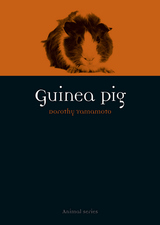
Yamamoto examines the role guinea pigs have today—as pets—but also looks back to less loving times when guinea pigs were put to more direct use. She discusses them as a crucial sacrificial offering to Incan gods, as the entrée in the Cusco Cathedral’s painting of The Last Supper, and as a highly favored experimental subject—for which they have become the quintessential metaphor for anyone in the same unfortunate circumstance. Threading her account with examples from the guinea pig’s many appearances in literature and art, Yamamoto reveals the personality and cultural importance of an animal we have always wanted to keep nearby, providing a fun and unique book for any animal lover.
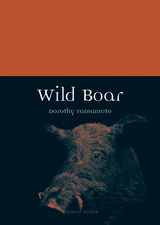
Dorothy Yamamoto takes us from the dense streets of Tokyo to the Forest of Dean in England to show how wild boars have survived in a variety of settings. She also explores the ways that they have figured in our imaginations, whether as the iconic Calydonian Boar from Ancient Greece, the White Boar of Richard III, or any of the other forms it has taken in mythology and lore. As she shows, the boar has been an especially prominent figure in hunting culture, and as such it has often been construed as a larger-than-life monster that only the most heroic of us can take down, a misperception that has threatened the boar’s survival in many parts of the world. With an illuminating combination of natural with cultural history, this book paints a vibrant portrait of a unique and often misunderstood animal.
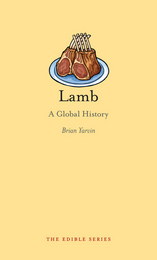
Starting with the earliest days of lamb and sheep farming in the ancient Middle East, Yarvin traces the spread of lamb to cooks in ancient Rome and Greece. He details the earliest recorded meals involving lamb in the Zagros Mountains of Iraq and Iran, explores its role in Renaissance banquets in Italy, and follows its path to China, India, and even Navajo tribes in America. Taking his story up to the present, Yarvin considers the growing locavore movement, one that has found in lamb a manageable, sustainable source of healthy—and tasty—protein. Richly illustrated and peppered with recipes, Lamb will be the perfect accompaniment to your next grilled chop or braised shank.

What exactly is street art? Is it the same as graffiti, or do they have different histories, meanings, and practitioners? Who makes it? Who buys it? Can it be exhibited at all, or does it always have to appear unsanctioned? Talking with artists, collectors, sellers, and buyers, author Alison Young reveals an energetic world of self-made artists who are simultaneously passionate about an authentic form of expression and ambivalent about the prospects of selling it to make a living—even a fabulously good one.
Drawing on over twenty years of research, she juxtaposes the rise and fall of art markets against the vibrancy of the street and urban life, providing a rich history and new ways of contextualizing the words and images—some breathtakingly beautiful—that seem to appear overnight in cities around the world.
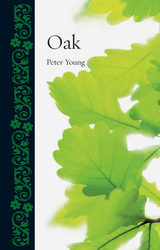
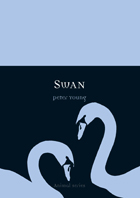
The natural history of the swan is surprisingly complex, as Peter Young reveals, delving into the bird’s habitat and feeding habits, the physiological details of the eight surviving species and several extinct ones, the bird’s power and endurance, and the formation flying that allows them to conserve energy and fly great distances with speed. Swan gives equal treatment to the long and rich role of the swan in human culture, from the Greek myth of Leda and the Swan to the bird’s portrayal in sculpture, furniture, and brand name logos. Young also details the challenges facing conservation efforts to protect swans from human consumption and material goods.
An engrossing account, Swan will be a welcome addition to the bookshelf of all who admire this beautiful bird.
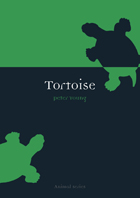
The tortoise has been seen as an Atlas-like creature supporting the world, as the origin of music and as a philosophical paradox. Peter Young examines the tortoise in all these guises, as well as a military tactical formation, its exploitation by mariners and others for food, as ornament (in tortoiseshell), as a motif in art, and in space research. He looks at the movement away from exploitation to conservation and even the uses of the tortoise in advertising. As well as examples of species, illustrations from around the world include monuments, sculptures, coins, stamps, objets d’art, drawings, cartoons, advertisements and X-rays.
The book will appeal not only to tortoise lovers but also to readers of cultural histories around the world.
"Peter Young’s Tortoise, on the other claw, can be warmly recommended."—Jonathan Bate, The Times
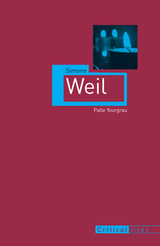
Simone Weil, legendary French philosopher, political activist, and mystic, died in 1943 at a sanatorium in Kent, England, at the age of thirty-four. During her brief lifetime, Weil was a paradox of asceticism and reclusive introversion who also maintained a teaching career and an active participation in politics.
In this concise biography, Palle Yourgrau outlines Weil’s influential life and work and demonstrates how she tried to apply philosophy to everyday life. Born in Paris to a cultivated Jewish-French family, Weil excelled at philosophy, and her empathetic political conscience channeled itself into political engagement and activism on behalf of the working class. Yourgrau assesses Weil’s controversial critique of Judaism as well as her radical re-imagination of Christianity—following a powerful religious experience in 1937—in light of Plato’s philosophy as a bridge between human suffering and divine perfection.
In Simone Weil, Yourgrau provides careful, concise readings of Weil’s work while exploring how Weil has come to be seen as both a modern saint and a bête noir, a Jew accused of having abandoned her own people in their hour of greatest need.
READERS
Browse our collection.
PUBLISHERS
See BiblioVault's publisher services.
STUDENT SERVICES
Files for college accessibility offices.
UChicago Accessibility Resources
home | accessibility | search | about | contact us
BiblioVault ® 2001 - 2024
The University of Chicago Press









